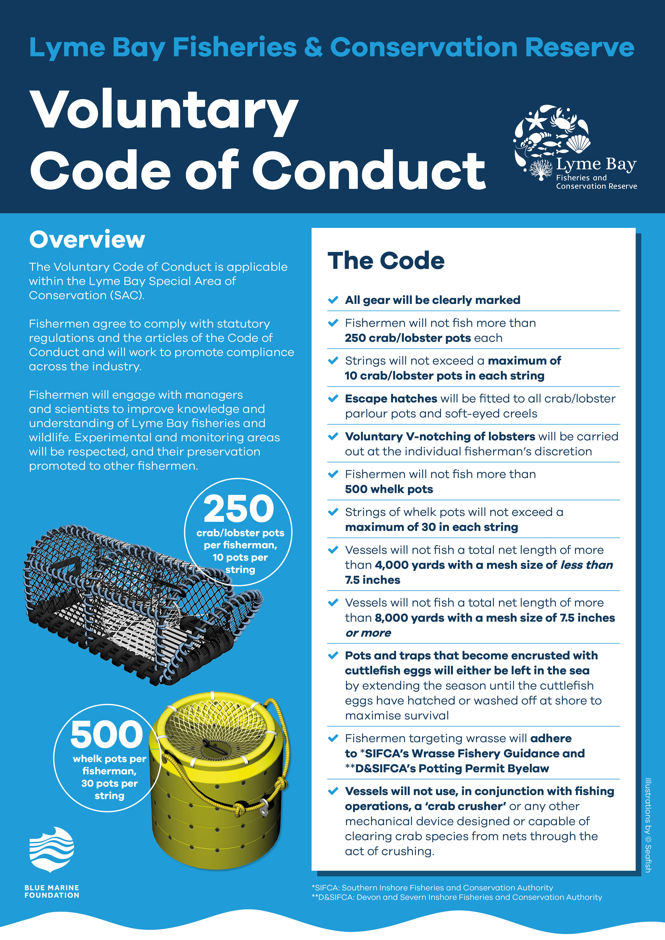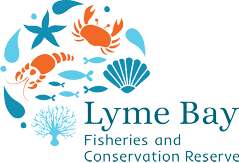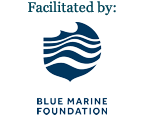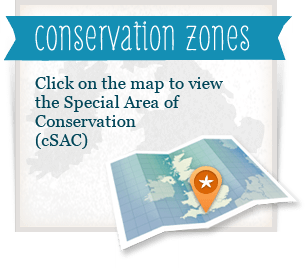Voluntary Codes of Conduct
In 2012 the Lyme Bay Fisheries and Conservation Reserve Consultative Committee assessed the measures that might improve the management of the area. From an early point in the discussions, the difficulty of doing anything quickly to improve the management of the area under the statutory route was identified. A byelaw for example, can take up to two years, including public consultation and with the Reserve spanning two separate fisheries authority districts, measures would have to be introduced through two separate processes. The Committee therefore agreed that the best approach was to start with voluntary measures.
The first Voluntary Code of Conduct for Commercial Fisheries was agreed by the Lyme Bay Reserve Committee in 2012, committing fishermen to engage with managers and scientists to improve knowledge and understanding of fisheries and wildlife and to respect experimental and monitoring areas within the Reserve. The Code has since been adapted to reflect research and knowledge on the sustainable levels of fishing and practices that are compatible with the Reserve, with the addition of:
- A limit of 250 crab or lobster pots per vessel with no more than 10 pots in each string
- A limit of 500 whelk pots per vessel with no more than 30 in each string
- A limit of 4,000 yards total net length with a mesh size of less than 7.5 inches
- A limit of 8,000 yards total net length with a mesh size greater than 7.5 inches
Adherence to the Code is a requirement for any fishermen who wish to participate in the Reserve Seafood marketing scheme.
A Voluntary Code of Conduct for Recreational Sea Anglers was agreed in 2014 and is promoted, with support from the Angling Trust, to fishing clubs and tackle shops.
The Codes of Conduct can be found in full in the Download Centre.






















